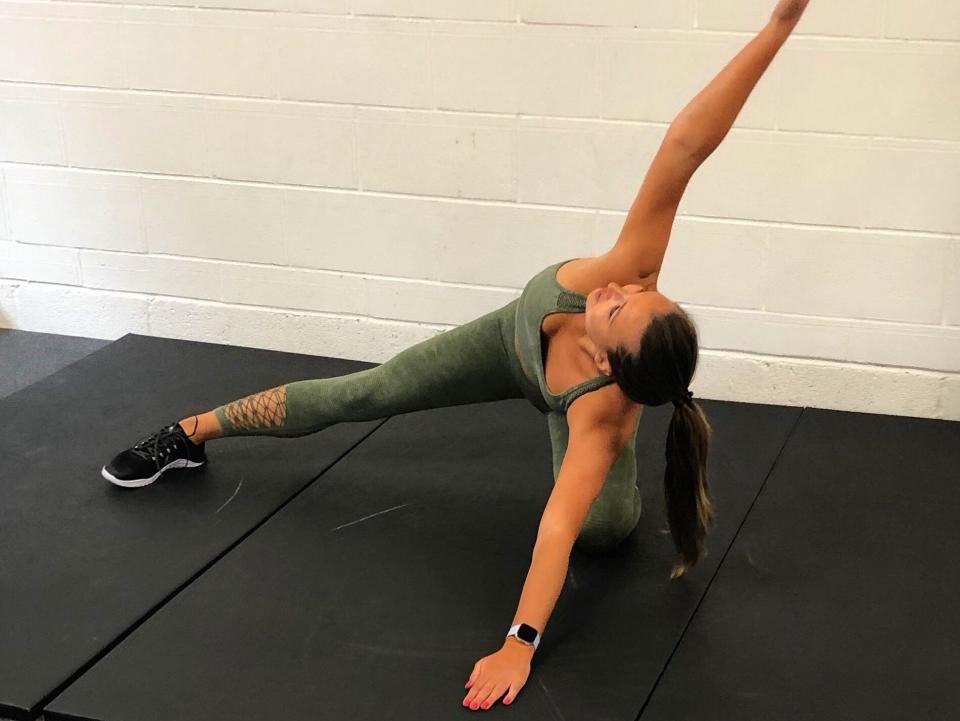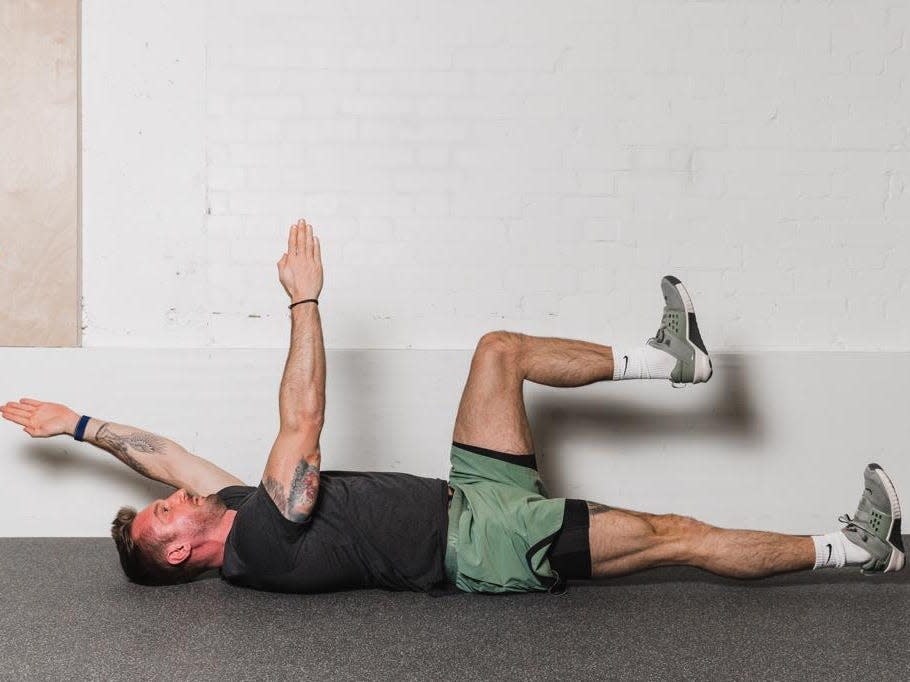Cardio or stretching isn't the best way to warm-up for a workout. Here's what you should do instead, according to a personal trainer.
Doing cardio or stretching to warm-up for a workout is a mistake, personal trainer Luke Worthington said.
Instead, you should do "movement prep" to prepare the body for what you're going to train.
This involves activating the muscles you're going to use, which can help prevent injury.
While some workout enthusiasts swear by cardio or stretches to "warm up" before a work out, personal trainer Luke Worthington said that practice is rooted in outdated exercise wisdom.
Cardio increases your body temperature, but it isn't an effective way to get ready for the main part of your workout, whether that's strength training, HIIT, or anything else, he said.
Instead, he said you should do "movement prep," which can include movements like deadbugs and glute bridges, to prepare your body for the exercises you're going to perform.
Personal trainer Don Saladino agrees with Worthington, previously telling Men's Health that cardio isn't the best way to prepare for your workout.
Replace 'warm-up' with 'movement prep'
Worthington encourages people to use the term "movement prep" rather than "warm-up."
"You should consider it as part of your workout, and the purpose is to get your body in the best position and state to do the activity you're going to do," he said.
By spending the first 15 minutes of an hour-long workout doing movement prep, you'll perform better and reduce your injury risk, Worthington said.
If you have less time than normal, cut the exercises you'd planned at the end of your workout (often ab work or isolation movements like bicep curls) rather than scrimping on your movement prep. This will help you perform your big lifts better and thus get better strength gains and muscle growth, Worthington said.

To properly movement prep, you need to get yourself in the right headspace to train, perhaps with some breathwork or music.
Next, it's important to take into account your body's individual needs. Someone who is sedentary all day might need to work on opening up the hips. But another person who is on their feet all day might need to focus on bending.
"It's taking you out of the position that you spend most of your time in and getting you into positions that are more suitable for your workout," Worthington said.
Think of it like bridging the gap between what your body does all day, and what you're about to do, he said.
Activate the muscles you're going to train
Certain exercises, like glute bridges or dead bugs, can help prepare the whole body to train. But you should also do exercises that will specifically activate the muscles you're going to use.

So, for example, if you're about to do deadlifts, and you know that you struggle to engage your lats, you might do some lat pull-downs with a resistance band to activate those muscles.
If you're going to do pull-ups, you want to activate and connect with the muscles in between the shoulder blades to keep yourself stable and support the movement more effectively, Worthington said.
Resistance bands can be useful for activation because they provide constant low level resistance, he said.
Pre-workout stretching may hurt more than help
Static-stretching pre-workout is "a big no-no" and "a really common mistake," according to Worthington.
This is because muscles have "protective neural tension" designed to protect the body, he says.
Stretching muscles makes them more amenable to pulling and essentially reduces this protective mechanism, he said. But the protection is important for preventing injury when training.
"Stretching puts muscles in a weakened position and tones down protective tension," Worthington said. "When we're trying to train it, we need to tone it up."
If you stretch your hamstrings before deadlifting, for example, they won't be able to produce as much force, he said.
"Static stretching is not only not useful pre-training, it's potentially quite dangerous," Worthington said.
Stretching muscles that are cold at the start of a workout can actually cause tears, personal trainer Morit Summers told USA Today.
According to a 2013 meta-review by the University of Zagreb, people who did static stretching proceeded to run more slowly, lift lower weights, and jump less high.
Read the original article on Insider

